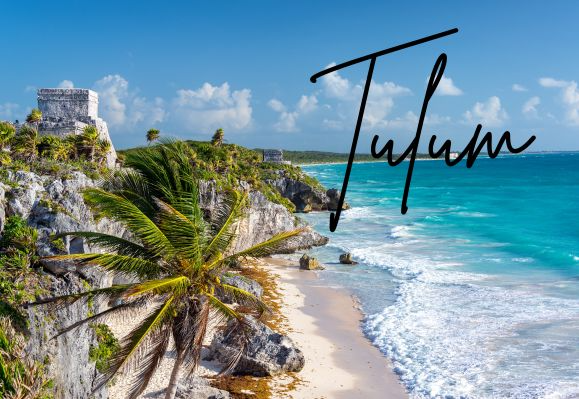Book Your Dream Flight with flighys
Home » Flights
Picture this: you're standing on limestone cliffs, turquoise Caribbean waters stretching endlessly before you, while behind you rise the weathered stone walls of a 700 year old Maya city. This is Tulum—and trust me, no photo does it justice. Safely land there with Flighys.

Unlike other Maya sites buried deep in the jungle, Tulum chose the ultimate real estate: beachfront property with a view. The ancient Maya weren't just brilliant astronomers and architects; they had impeccable taste in location. Originally called "Zama" (meaning "dawn"), this city was perfectly positioned to catch the first light each morning.
What makes my heart race about Tulum is this: when Spanish explorers arrived in 1518, this wasn't some long abandoned ruin. People were living here, trading here, and worshipping here. You're walking through a city that witnessed the collision of two worlds.
The Buildings That Tell Stories
El Castillo isn't just Instagram pretty; it's a lighthouse that guided Maya traders through dangerous coral reefs. During the winter solstice, sunlight streams through a tiny window to illuminate the altar inside. The Maya calculated this astronomical alignment centuries before GPS existed.
The Temple of Frescoes houses vibrant murals that survived hurricanes, salt air, and time itself. These aren't just pretty pictures—they're windows into Maya mythology, showing us gods and creation stories that shaped an entire civilization. Then there's the mysterious Temple of the Descending God, featuring an upside down carved figure that still puzzles archaeologists. Is it a bee god? Venus as the evening star? The mystery adds to Tulum's magic.
More Than Just Ruins
Tulum was Miami Beach for the ancient Maya—a cosmopolitan trading hub where obsidian from Guatemala, jade from distant valleys, and copper from Central Mexico changed hands. Massive canoes carrying 25 people would brave these waters for commerce that connected civilizations across thousands of miles.
The surrounding cenotes (natural sinkholes) weren't just water sources—they were sacred portals to the underworld. Imagine Maya priests conducting ceremonies in these crystal clear pools, believing they were communicating with gods below.
The Human Connection
Here's what moves me most: Maya communities still live around Tulum. Their ancestors built these temples, and their descendants still practice traditional agriculture and crafts. This isn't just ancient history; it's living heritage.
When you visit nearby villages like Chemuyil, you're not just seeing "authentic culture" for tourists. You're meeting people whose great grandparents might have walked these same stone paths.
Planning Your Journey Back in Time
Go early or late, 8 AM or late afternoon. You'll avoid crowds and experience the ruins in that golden light that's illuminated them for centuries. The sunrise from El Castillo? Absolutely magical. Get a local guide if possible. Many are Maya descendants with stories passed down through generations, details you won't find in any guidebook.
Stay longer than just the ruins. Explore the Sian Ka'an Biosphere Reserve or venture to nearby Coba, connected to Tulum by ancient Maya highways that are engineering marvels themselves.
The Bigger Picture
Tulum faces real challenges over 2 million visitors annually, climate change, and hurricanes. Every time you visit, you're witnessing something fragile and irreplaceable. The Mexican government is working to balance preservation with access, but it's a delicate dance.
Why This Place Matters
Standing where Maya priests once greeted the dawn, you feel something profound—a connection across centuries to people who looked at the same stars, felt the same ocean breeze, and created something beautiful that outlasted empires.
Tulum isn't just about ancient stones.
It's about human ingenuity, cultural resilience, and our shared capacity to create meaning in the world. When those weathered limestone walls catch the morning light, you're not just seeing ruins—you're witnessing proof that remarkable civilizations thrived here long before our modern world existed.
Conclusion
Tulum is where the ancient Maya legacy meets coastal Caribbean beauty: cliffs holding ruins, junglewrapped cenotes, and a timeless, youthful spirit to inspire you. With Flighys, your Tulum journey is not just a beach holiday; it is a deep dive into history, nature, and culture. Whether you are wandering through ancient temples or swimming in sacred waters, Flighys will help ensure you have immersive, effortless, and memorable experiences. You will come for the beauty; you will stay for the rich histories still whispered by Tulum.
Read More:- Click Here